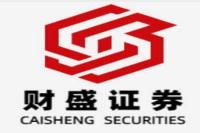LPR Holds Steady: What Does This Mean for Borrowers and the Economy? 🤔
Meta Description: Discover the implications of the unchanged LPR rates for borrowers and the Chinese economy. Explore the factors influencing the decision, potential future adjustments, and their impact on various sectors.
The August 2023 LPRs stayed put, with both the 1-year and 5-year rates holding at 3.35% and 3.85% respectively. This news, while seemingly uneventful, carries significant weight for borrowers, businesses, and the overall economic landscape. It's a signal that the People's Bank of China (PBOC) is maintaining a cautious approach to monetary policy, balancing the need for economic stability with the desire to tame inflation.
The LPR's Steady Hand: A Deep Dive into its Significance
The Loan Prime Rate, or LPR, is the benchmark interest rate used for most new loans in China. It's a key indicator of borrowing costs, influencing everything from mortgages to corporate loans. The LPR's stability in August reflects a confluence of factors:
- A Balancing Act: The PBOC is navigating a complex economic landscape. While growth remains a priority, concerns linger about inflation and asset bubbles. Keeping the LPR unchanged allows the central bank to monitor the situation and adjust policy as needed.
- Easing Pressure on Borrowers: Holding the LPR steady provides breathing room for borrowers, particularly those with existing loans. It prevents a sudden spike in interest payments, ensuring financial stability for individuals and businesses.
- Supporting Economic Growth: While the LPR is not lowered, the unchanged rates signal the PBOC's commitment to fostering a stable economic environment, encouraging investment and promoting confidence in the market.
What Lies Ahead? Potential Shifts in the LPR Landscape
While the August LPR remained unchanged, the future is far from certain. Several factors could influence future adjustments:
- Inflationary Pressures: Inflationary trends, both domestically and globally, will heavily impact the PBOC's decisions. If inflation rises significantly, the central bank might consider raising the LPR to curb spending.
- Economic Growth Trajectory: The pace of economic growth will play a pivotal role. If growth weakens, the PBOC might lower the LPR to stimulate borrowing and investment.
- Global Monetary Policy: The actions of major central banks, particularly the US Federal Reserve, will also influence the PBOC's policy choices.
The LPR's Impact on Key Sectors
The LPR's stability has ripple effects across various sectors:
- Real Estate: The unchanged LPR provides a stable backdrop for the real estate market, which has been facing headwinds. This could encourage continued investment and home buying, bolstering the sector's recovery.
- Corporate Loans: The unchanged LPR helps to keep borrowing costs for businesses manageable, promoting investment and expansion. This, in turn, supports job creation and contributes to overall economic growth.
- Consumer Spending: The stable LPR environment encourages consumer spending, particularly for large purchases like cars and appliances. This boosts domestic demand and contributes to economic activity.
LPR: A Vital Tool for Economic Steering
The LPR is a powerful tool for the PBOC to guide the Chinese economy. By maintaining a steady LPR, the central bank aims to strike a delicate balance between fostering growth, managing inflation, and supporting financial stability.
Keywords: LPR, Loan Prime Rate, China, Interest Rates, Monetary Policy, Economic Growth, Inflation, Real Estate, Corporate Loans, Consumer Spending
Understanding the LPR: A Comprehensive Guide
The Loan Prime Rate (LPR) is the benchmark interest rate used for most new loans in China. This rate serves as a foundation for setting interest rates on various loans, including mortgages, corporate loans, and personal loans. To understand its significance, let's delve into its origins, how it's calculated, and its impact on the Chinese economy.
The Evolution of the LPR
The LPR evolved from the previous benchmark interest rate system, which lacked flexibility and responsiveness to market conditions. The current LPR system, established in 2019, aims to better reflect market dynamics and provide greater transparency in interest rate determination.
How is the LPR Calculated?
The LPR is determined based on a mechanism involving a panel of 18 commercial banks. These banks submit their own lending rates, and the average of these rates, weighted by their loan balances, becomes the LPR. This approach ensures that the LPR reflects the actual lending conditions in the market, making it a more dynamic and representative benchmark.
LPR: A Key Driver of Economic Activity
The LPR plays a crucial role in shaping economic activity in China:
- Borrowing Costs: The LPR directly affects borrowing costs for individuals and businesses. Lower LPRs translate into lower interest payments, making it more attractive to borrow money. This, in turn, fuels investment and spending, driving economic growth.
- Investment Decisions: The LPR influences investment decisions by businesses. Lower LPRs make it more appealing to take out loans for expansion or new projects, stimulating economic activity and job creation.
- Consumer Spending: The LPR impacts consumer spending patterns. Lower LPRs lead to lower mortgage rates, making home ownership more accessible. This encourages consumer confidence and boosts spending on other goods and services.
LPR and the PBOC's Monetary Policy
The LPR is an integral part of the PBOC's monetary policy toolkit. The central bank uses the LPR to influence the overall cost of borrowing and, consequently, the level of economic activity. The PBOC can adjust the LPR through:
- Open Market Operations: The PBOC can inject liquidity into the banking system through open market operations, lowering the cost of funds for banks and, in turn, potentially reducing the LPR.
- Reserve Requirement Ratio: The PBOC can adjust the reserve requirement ratio for banks, impacting their lending capacity and potentially influencing the LPR.
- Policy Interest Rates: Changes in policy interest rates, such as the medium-term lending facility (MLF) rate, can influence the LPR, as banks adjust their lending rates based on these signals.
FAQ: Unraveling the Mysteries of the LPR
1. What are the different LPR rates?
There are two main LPR rates:
- 1-Year LPR: This rate is typically used for shorter-term loans, such as personal loans and corporate loans with a maturity of less than one year.
- 5-Year LPR: This rate is primarily used for longer-term loans, such as mortgages and corporate loans with a maturity of five years or more.
2. How often is the LPR announced?
The LPR is typically announced on the 20th of each month. However, the PBOC can adjust the LPR at any time based on economic conditions and policy objectives.
3. How does the LPR compare to other interest rates?
The LPR is the benchmark interest rate in China, and it typically serves as a reference point for other interest rates, including deposit rates and lending rates offered by commercial banks.
4. Why isn't the LPR always changing?
The PBOC aims to maintain stability in the financial system. Frequent fluctuations in the LPR can create uncertainty and disrupt economic activity. The central bank carefully considers economic conditions and policy objectives before making any adjustments to the LPR.
5. Who benefits from a lower LPR?
Borrowers benefit from a lower LPR, as it reduces their interest payments. This includes individuals with mortgages, businesses taking out loans, and consumers with personal loans.
6. What are the potential risks of a very low LPR?
A very low LPR can lead to an increase in borrowing and potentially fuel asset bubbles. This can create financial instability and necessitate future policy tightening.
Conclusion: The LPR's Enduring Influence
The LPR is a cornerstone of China's monetary policy framework. Its stability reflects the PBOC's delicate balancing act between stimulating growth and maintaining financial stability. The LPR's future trajectory will depend on a multitude of economic and policy factors. Understanding the LPR and its role in the Chinese economy is crucial for investors, businesses, and consumers alike, as it shapes the cost of borrowing, investment decisions, and overall economic activity.



